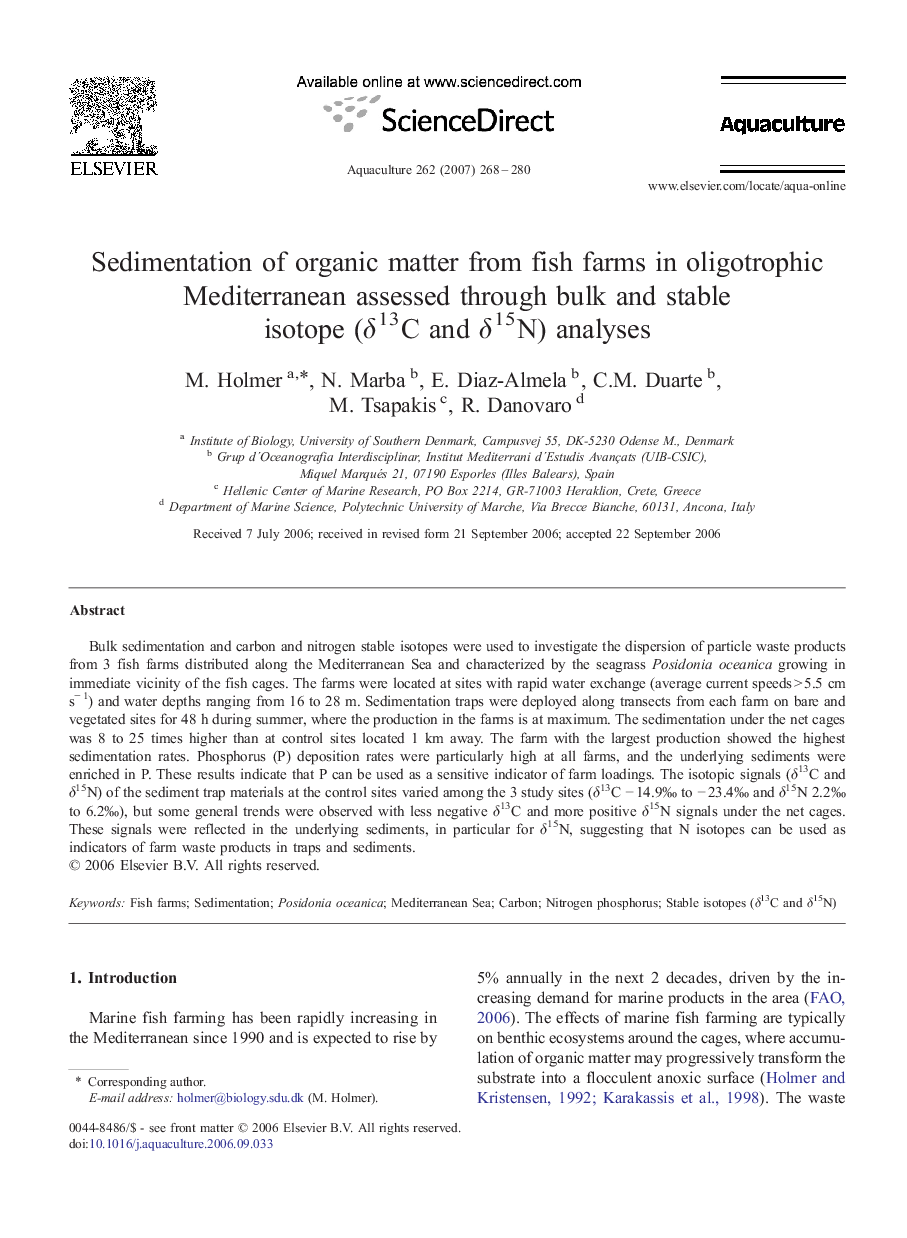| Article ID | Journal | Published Year | Pages | File Type |
|---|---|---|---|---|
| 2425323 | Aquaculture | 2007 | 13 Pages |
Bulk sedimentation and carbon and nitrogen stable isotopes were used to investigate the dispersion of particle waste products from 3 fish farms distributed along the Mediterranean Sea and characterized by the seagrass Posidonia oceanica growing in immediate vicinity of the fish cages. The farms were located at sites with rapid water exchange (average current speeds > 5.5 cm s− 1) and water depths ranging from 16 to 28 m. Sedimentation traps were deployed along transects from each farm on bare and vegetated sites for 48 h during summer, where the production in the farms is at maximum. The sedimentation under the net cages was 8 to 25 times higher than at control sites located 1 km away. The farm with the largest production showed the highest sedimentation rates. Phosphorus (P) deposition rates were particularly high at all farms, and the underlying sediments were enriched in P. These results indicate that P can be used as a sensitive indicator of farm loadings. The isotopic signals (δ13C and δ15N) of the sediment trap materials at the control sites varied among the 3 study sites (δ13C − 14.9‰ to − 23.4‰ and δ15N 2.2‰ to 6.2‰), but some general trends were observed with less negative δ13C and more positive δ15N signals under the net cages. These signals were reflected in the underlying sediments, in particular for δ15N, suggesting that N isotopes can be used as indicators of farm waste products in traps and sediments.
